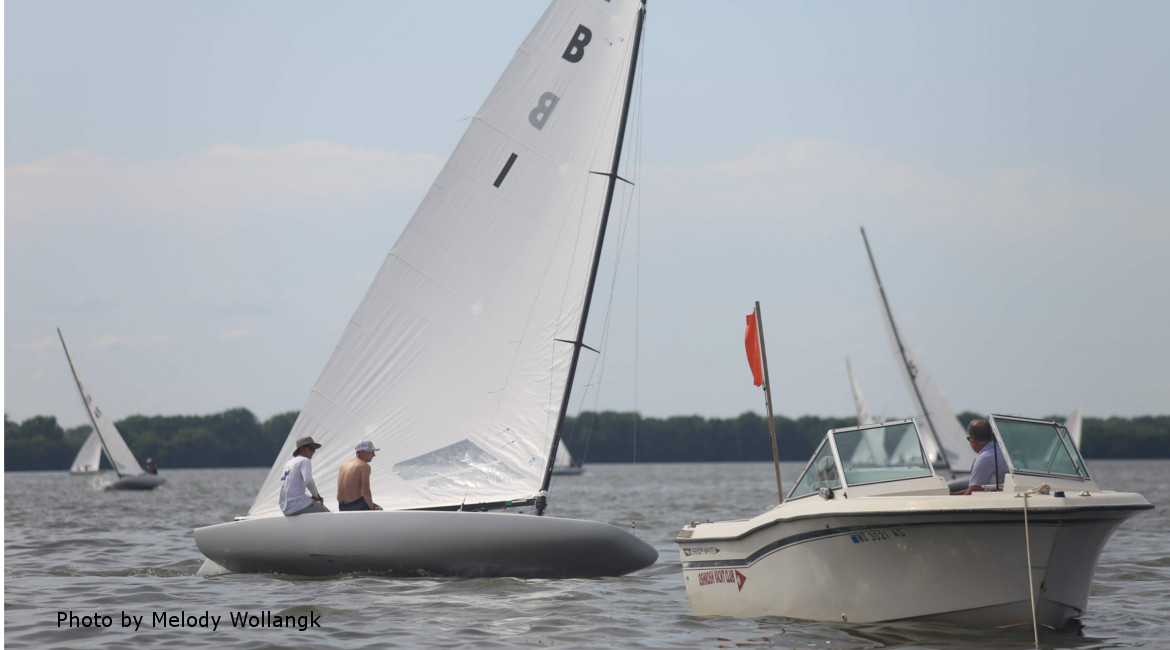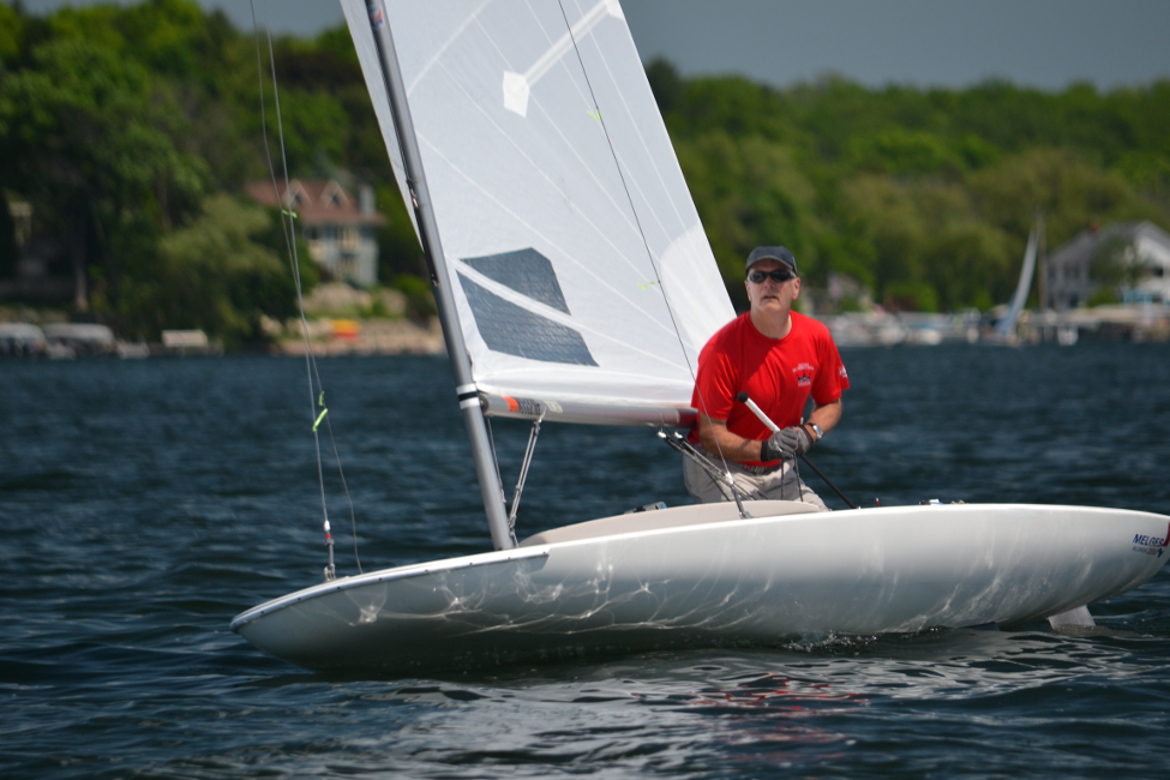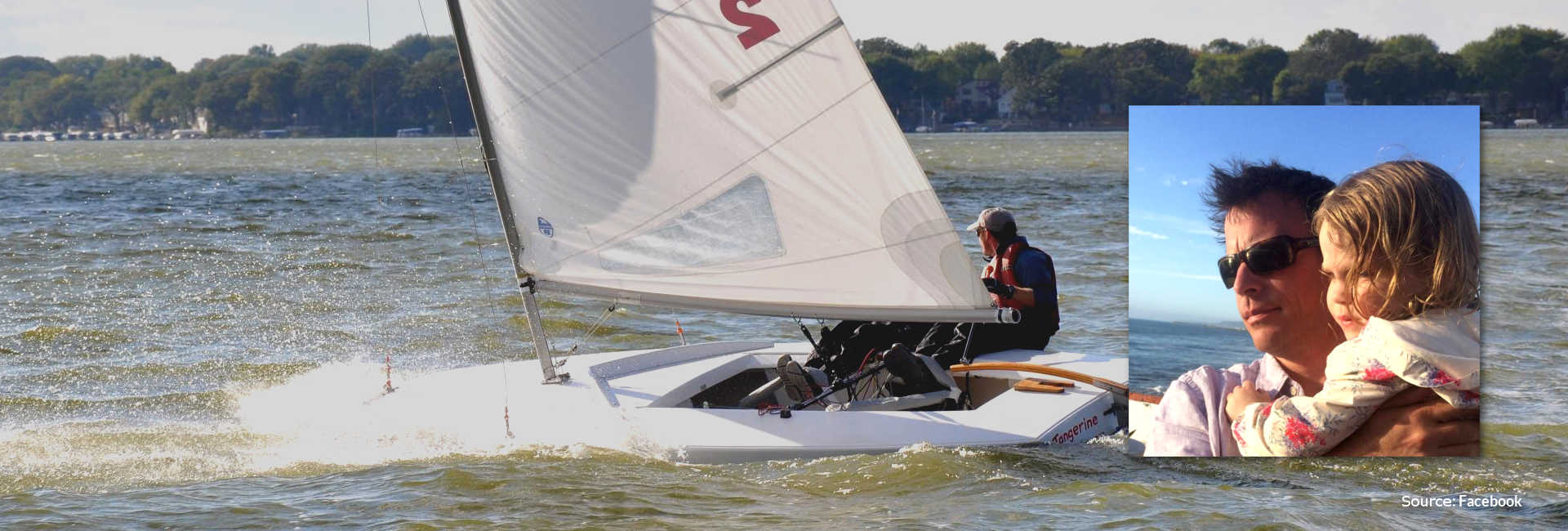Will Haeger, from Lake Beulah Yacht Club, won the 2019 ILYA C Scow Championship with crew Brad Roble. Will and Brad won all three races sailed. SailZing asked Will to share insights in this ILYA champion interview.
ILYA Champion Interview – C Scows
Starts
Question: You almost always get good starts. What do you attribute that to?
Will: Especially in lighter air, it’s crucial to be more maneuverable than your competitors. In particular, I focus on either moving through the water faster than those around me at all times, or being in a position to accelerate more rapidly than those around me. If you’re static and luffing on the starting line, you’re a sitting duck and relying on chance that someone won’t steal your lane. If you’re always moving just a little faster than those around you, you keep your options open and control your own destiny.
Boat Speed
Question: Your boat speed was superior in the conditions at Oshkosh. What do you think makes your speed so good in these conditions?
Will: We did have great speed all weekend. From the crew perspective, Brad did a great job of balancing the boat and reacting quickly to puffs/lulls, which weren’t always obvious to read in those tricky conditions. In general, Brad does all of the macro heel adjustments while I keep myself in a position to do more micro adjustments. Having a clear understanding of who moves when allows for much smoother sailing, with consistent heel. Additionally, adjusting main trim in the puffy conditions is crucial. I like to ease and get the leech telltales flowing when going through lulls or waves and crank the main in a couple of clicks to gain height in the puffs. Talking through what you’re seeing on the water and counting down puffs and lulls is also important.
Strategy
Question: You seemed to pick the correct side much of the time. Could you give a few examples of what you were looking at on specific legs?
Will: Before a race, if there is no clearly-favored side, I try to get an understanding of the timing of the shifts and get on the favored tack as soon as possible after the start. That largely determines which side I’ll end up on.
During the race, a lot of what I do is look at the fleet going downwind and seeing what their angles look like. If the majority of the fleet going downwind is on port with a great angle, there’s a good chance that you’re in a righty and should get onto starboard as soon as possible after the mark. The earlier you start planning for the coming upwind leg, the better, as you can start angling for the buoy on the side of the course that you want. Overall, our game plan for a big fleet on a big lake like Winnebago was to play a side.
Choosing a Different Side
Question: On the last leg of the first race, you tacked to port shortly after rounding and went up the right side, even though the left had worked for you twice. I think you said you were lifted on starboard downwind, so port would be lifted upwind. Did you also see better breeze? Were you also trying to split with E-88? (E-88 rounded the last leeward mark in first place, slightly ahead of Will.)
Will: Definitely part of our thinking was to get clear of E-88. We also rounded in a pretty good lefty so getting onto port quickly was part of the strategy. Lastly, there was a gap in the fleet going downwind that allowed us to have largely clear air after tacking. If E-88 wanted to cover us, they would have had to deal with more traffic. In general, we tried to dumb things down and only tack when we had an obvious reason to (like we were at layline or had hit a large shift). In those conditions, where there tended to be longer-lasting shifts, you can get out of phase quickly if you try to tack on every little knock.
Related Content:
2019 ILYA Championship Results
Upwind Strategy Skills Checklist
Starting Strategy and Tactics Category
Plan the Next Beat: Ted Keller Comments





